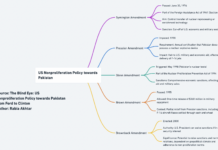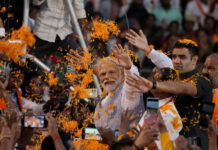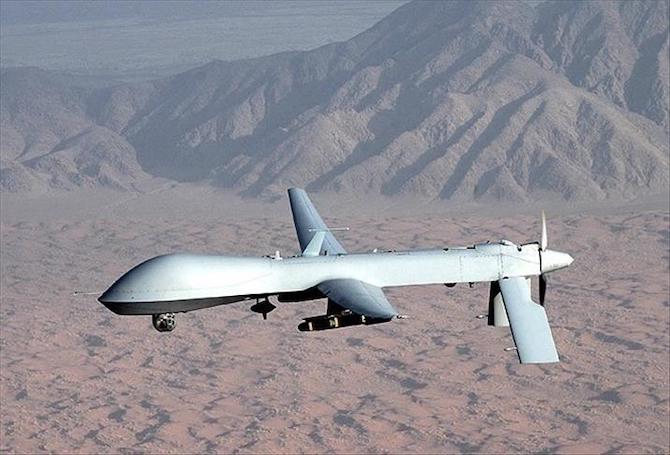Muhammad Shareh Qazi
“If we maintain our faith in God, love of freedom, and superior global air power, the future looks good.” General Curtis Emerson LeMay, USAF
A year ago, I wrote for Pakistan Politico, highlighting how the withdrawal of American military from Afghanistan would not bring an end to the operational presence of the Central Intelligence Agency (CIA). Signature strikes, UAV surveillance, and the ability to maximize target acquisition with minimum collateral damage have proven to be America’s crown jewels. The War on Terror initially started as a chance to retaliate with full force until America and its allies realized how Afghanistan can become a second Vietnam. The anticipation that Kabul will eventually fall to the Taliban came straight from the Afghan President and when it did happen, it was quicker than imagined.
For the American armed forces, the fall of Kabul, right after they withdrew, must have been a tragedy, but for CIA, it was an opportunity in the making. The American drone program was lambasted for its ability to cause unwanted collateral damage let alone unprecedented controversy of being able to violate jurisdictions. For the armed forces, having to cross a similar jurisdictional world was neither possible nor desirable. In this quagmire of having to choose the right strategy, American military seemed to have deferred more to CIA than required. Gradually, as more and more countries started to build UAVs and UCAVs, the race for dominating the unmanned world became intense. Countries like Türkiye, China, Iran, Pakistan, and Russia developed their own active UCAV systems. This race further permeated the Medium Altitude-Long Endurance (MALE) and High Altitude-Long Endurance (HALE) systems. Such systems were capable of providing ISTAR (Intelligence, Surveillance, Target Acquisition and Reconnaissance) on an active battlefield. With America celebrating more successful signature strikes than any other country in the world and all such operations handled by the CIA, how does striking al-Zawahiri translate on a larger canvas? What lessons has the CIA learned over the years while practicing and perfecting its drone operability?
AL-Zawahiri, Qassam ul-Urdini, and Bilal al-Sanaani became three al-Qaeda leaders targeted by precision strikes without causing collateral damage and rumors of a top-secret new Hellfire AGM became talk of the town. Its ability to eliminate targets without explosives is what was showcased in the three strikes conducted in Syria and Afghanistan. The American UCAV program entered into a new realm of precision targeting without engendering collateral damage but the question of where these drones would fly from still remains an obvious source of contention. Syria’s airspace, like that of Kabul, is a contested ground with locals maintaining no control over who flies above their heads. The Taliban understand the disadvantage; they may control the ground, but America most definitely controls the air. By showcasing how they can target the top brass of al-Qaeda without causing noncombatant collateral damage, America has signaled it is here to stay in Afghanistan, or its airspace at least. Knocking out Al-Zawahiri does not end al-Qaeda’s global presence and opens room for it to act as gun-for-hire for other more sinister organizations in and around their base of operations.
It does, however, put the Taliban and their relations with al-Qaeda on a grimmer scale by showing how well insulated Al-Zawahiri was in the heart of Kabul. For America, this exposition creates sufficient justification to rally support for continued UAV/UCAV activity and can also attract prospective partners that might offer some assistance, if not complete partnerships. With speculation of this latest signature strike pointing towards Central Asia and Pakistan, could it be an introduction of a new entrant in this new, all-important dimension?
Most favored UCAV platforms for such strikes are divided among three contenders: MQ-9 Reaper, MQ-1 Predator, and MQ-1C Gray Eagle. Despite carrying Hellfire missiles, the MQ-1 Predator is constrained by its range of around 1200 kilometers, while the MQ-1C Gray Eagle with its Extended Range (ER) modification provide operability of about 400km with a 25-hour endurance. The MQ-9 Reaper boasts an impressive range of 1850km and 27-hour endurance. With all three platforms capable of delivering Hellfire missiles, the question is where to launch them from? Pakistan and its strategic partnership with China may not be good news for American drones despite such an eventuality having a precedent. Sources theorize that it was Ganci/Transit Center at Manas and keeping endurance and range in mind, Middle Eastern partners are too far off. America has discontinued operating from Ganci Airbase since 2014 and continues to refuse providing details of where it operated from against Al-Zawahiri. Including time for a drone loiter, acquiring and verifying the target, and engaging with its payload mean the base is not far from Kabul. Another alternative could be airbases in Tajikistan, especially Farkhor Airbase and Ayni or Gissar Airbase, that are jointly operated by the Indian Air Force. What if the U.S. was able to operate from these airbases, just like it operated from bases in the larger scheme of the strategic partnership with India? Not only do they allow ease of operability due to their distance from Kabul, their previous utility in allowing India to operate in Afghanistan is no secret. Did India defer its jointly-operated airbases to American UCAVs in mopping up the last remnants of its mission against al-Qaeda? Did the Indo-U.S. strategic partnership see its first clandestine adventure to create ground for practical manifestation for intelligence-sharing? Maybe these rumors are just educated guesses until America reveals whether the drone flew from or over Kyrgyzstan, Pakistan, or elsewhere.
Afghanistan’s situation is slowly and gradually turning into a tumultuous one and Al-Zawahiri’s death would only trigger another series of terrorist reprisals. It may not damage the Taliban and their political trajectory, but it will open Afghanistan for other terrorist entities forming coalitions to keep it in perpetual unrest. This means that countries around Afghanistan would have a very hard time dealing with humanitarian and security repercussions and will eventually seek assistance from a more seasoned veteran. This means that though America may not offer its military, it could surely extend CIA’s signature strike strategy. This would recreate the high times of War on Terror and will keep America relevant in the region. A constant surveillance and engagement system ensures that America deters the Taliban and may even coerce them to meet demands. For the CIA, this would mean providing a win-win scenario for American interests in South Asia and making sure it maintains uninterrupted dominance against any prospective challenges. The Afghan Taliban denying knowledge of Al-Zawahiri and his compound located in the most central locations of Kabul creates the type of environment that suits America in continuing its UAV/UCAV operability, thus dominating Afghanistan’s airspace. The revelation of where the drone flew from would clear these conjectures, but the State Department might not be so keen on sharing this information anytime soon.
Dr. Shareh Qazi is an Assistant Professor at the Department of Political Science, University of the Punjab.

















